Greek shipbuilder putting wind in sails of dying art

SKOPELOS, Greece – One of Greece’s master shipbuilders works in a factory that could barely hold a large canoe. His display area could qualify as Greece’s smallest museum.
Yet Yannis Bountalas is anything but small. His family of shipbuilders goes back seven generations covering more than 200 years. At one time, his ancestors made the boats that plied the Aegean Sea. They took goods and shipped them all over the world, to anyone who needed olive oil or wine or any of the other goods this naturally rich island of Skopelos has to offer.
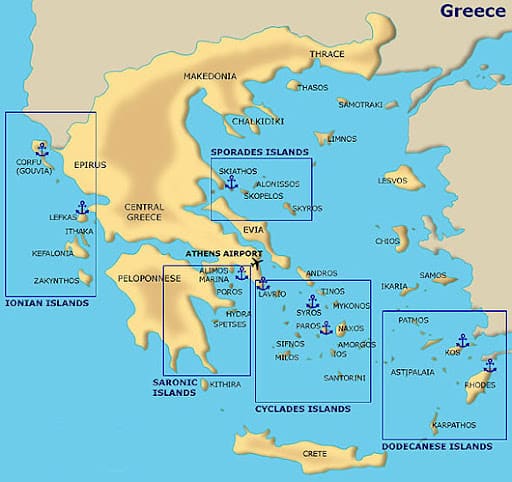
But times changed. Ships changed. Exporting changed. Today, Yannis still makes the same boats. They’re just smaller. They’re replicas. And they’re not just Greek merchant ships only a captain’s mother could recognize. They’re American and British battleships. They are boats the Greeks converted to fight the Ottomans. Remember the HMS Bounty, the British merchant ship Captain William Bligh took to the West Indies before the mutiny on the Bounty forced him to, ahem, retire early?
That’s here.
“It’s important because we continue a very long tradition in shipbuilding, real shipbuilding,” Yannis told me through his daughter, Regina, his translator and herself a shipbuilder. “This isn’t modeling. These are replicas and we use the same techniques. We follow the traditional type quality of real shipbuilding.”
Where is it?
Marina and I found Yannis in a quiet neighborhood high up the hill from Skopelos’ harbor where the family once built the real boats. Nice homes bordered a spotless street. In an appetizing fruit and vegetable shop a man directed us to the Bountalases’ shipbuilding factory where the small sign is nearly impossible to see from the street..
It’s a small space no bigger than a two-star hotel room. Pieces of wood filled shelves. A boat four feet long nears completion on his work table. Adjacent was a room lined with vintage ships, all in perfect detail right down to the rigging of the masts. Some stood three meters tall.
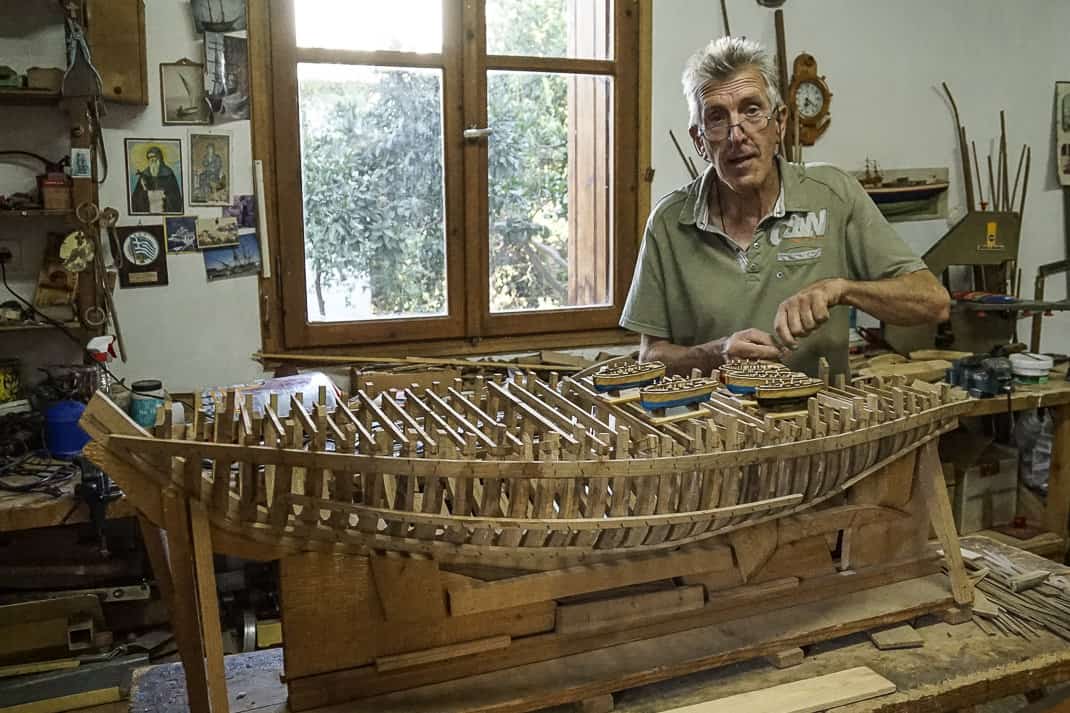
Yannis, 65, padded around the workshop, picking up a tool here, working on the ship there. His deep tan setting off his shocking head of silver hair made him look as if he spent a lot more time in the sun than in this dark little factory. Tall, lean and bespectacled, he looked like a scholarly man of the sea, which he is.
His art is unique around the world. Many build model ships. The Internet is filled with items, ranging from the work of a seasoned artist to something your kid butchered in wood shop. But very few people make authentic replicas. A man does them in Malaysia. Another plies his trade in Macau.
It’s believed Yannis is unique in Europe. How unique? On his wall is a picture of him in his factory with Pierce Brosnan who spent time in Skopelos in 2007 filming “Mamma Mia!”
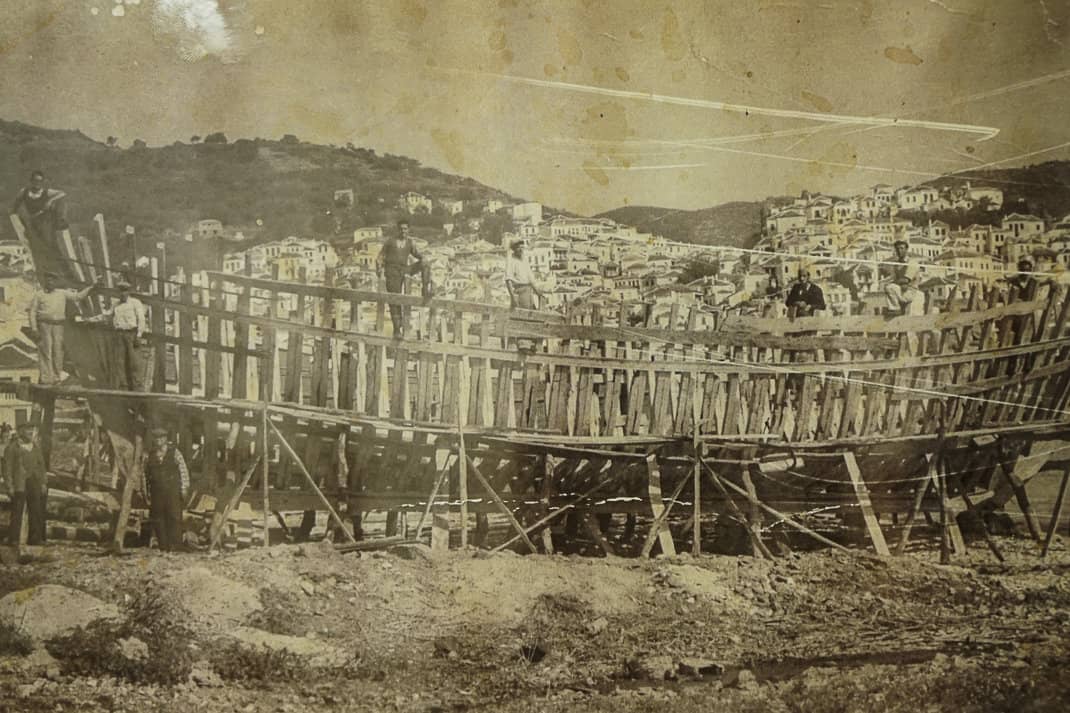
Greek shipbuilding history
This story begins in the early 1800s when Cristodoulos Bountalas first started building boats in Skopelos. The island is strategically located halfway up the Aegean Sea 80 miles north of Athens. The skill made its way through generations to Triantafyllos Bountalas who built ships on Skopelos until the rise of tourism in the 1970s killed the market for giant working sailboats.
To continue making a living he made smaller replicas. He just never had to get wet. He passed the skill to Yannis and when Triantafyllos died in 2012, Yannis carried the family flag.
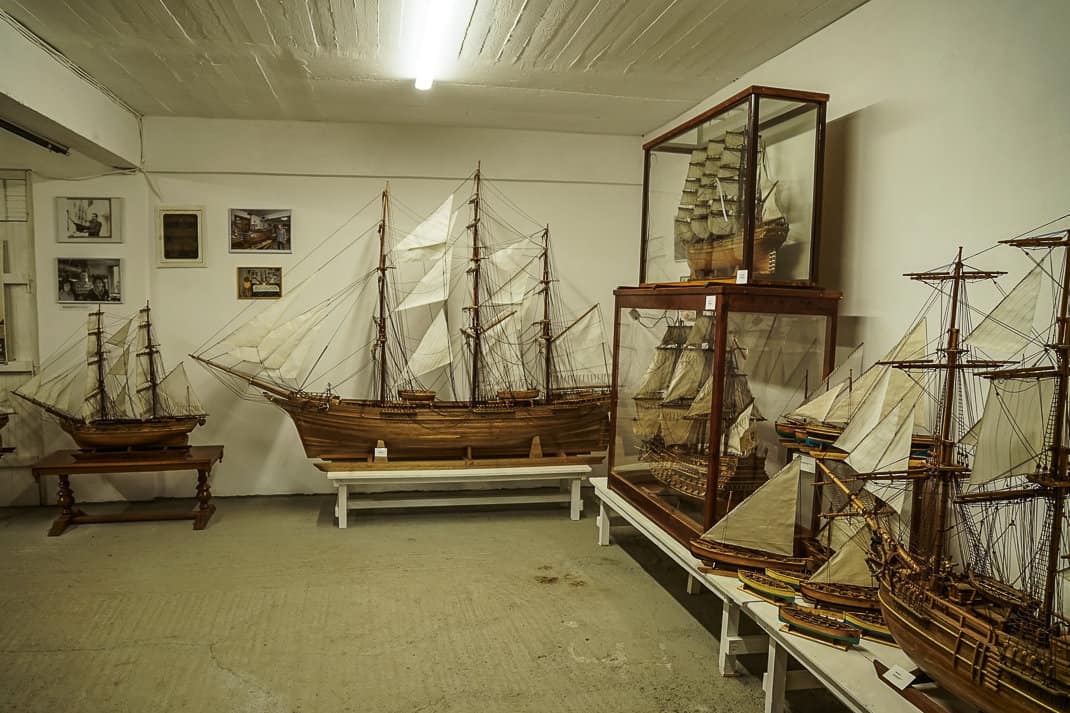
The ships
The exhibition area, free of charge, opened only four months ago. It is a hall of fame of world ships. The Bounty, with its majestic four white sails, is what Bligh used to attempt to transport food to the natives of the West Indies. It never got close. A year after his own crew murdered him in 1789, they burned the boat docked in Pitcairn Island east of Japan.
Nearby standing 10 feet high (three meters) and weighing 165 pounds (75 kilos) is the Cutty Sark. It was one of the last and fastest clipper boats in the English fleet. Its transportation of tea ended when steamships were able to cover the routes faster, dooming Cutty Sark to a dry dock in Greenwich, England, to a brand of a rotgut scotch and to a small exhibition room in the Greek Islands.

Then there is the Ares, a Greek merchant ship that the government turned into a battleship to fight the Ottomans, who ruled Greece from 1453-1890. The Greeks simply outfitted the sides of the Ares, named appropriately for the Greek god of war, with cannons which Yannis dutifully did in his replica.
The detail is remarkable. Yannis uses up to 1.7 meters of string just to rig the sails. The miniature helm moves and is connected to little rudders that also move.
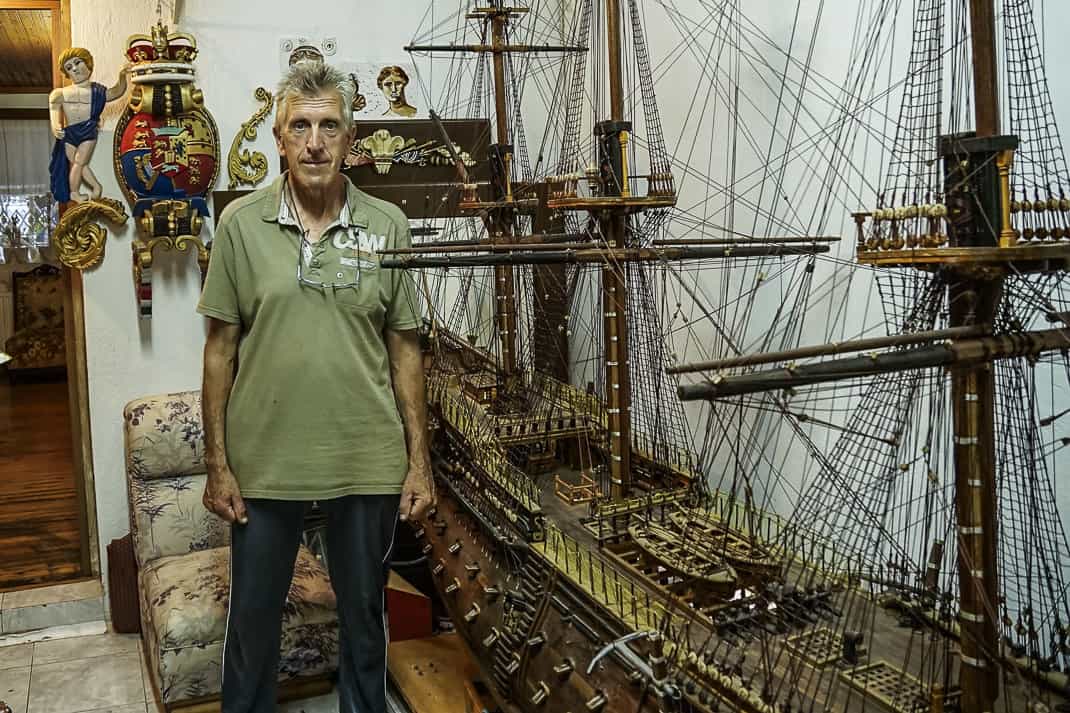
HMS Victory
One boat at four meters long is too big for even the factory. In their adjacent house, in its biggest room, is the HMS Victory, a Royal Navy warship featuring 104 mounted guns. Launched in 1765, it was used in Lord Nelson’s Battle of Trafalgar in 1805. The Victory is still in service, docked in Portsmouth, England, making it the oldest working naval vessel in the world.
Yannis doubles as an electrician. (Actually, he triples. He’s also a fisherman.) On the Victory he even installed lights, authentic from the blueprints.
How much do they sell for? One learned observer who visited said the Victory is worth at least €1 million. The family isn’t sure and hasn’t listed prices.
I’m not a big boat guy. I love the sea but anything more than a few days on it had better include some docks and sun-splashed bars. But walking through history in that little room, I felt the romance of the open sea during the 19th century. When I walked outside the factory, I looked out to the Aegean and knew, somewhere, a huge cruise ship with more passengers than some small cities was steaming through, polluting the seas and destroying the tranquility of a quiet Greek harbor.
I asked Yannis how he feels about his old shipbuilding industry dying to make way for these monstrosities. He shrugged in resignation.
“I’m sad but this is the evolution,” he said. “I can’t do anything about that. I feel sad even if I’m not living in that era. Those boats existed. It would be better if we had these kinds of boats.”
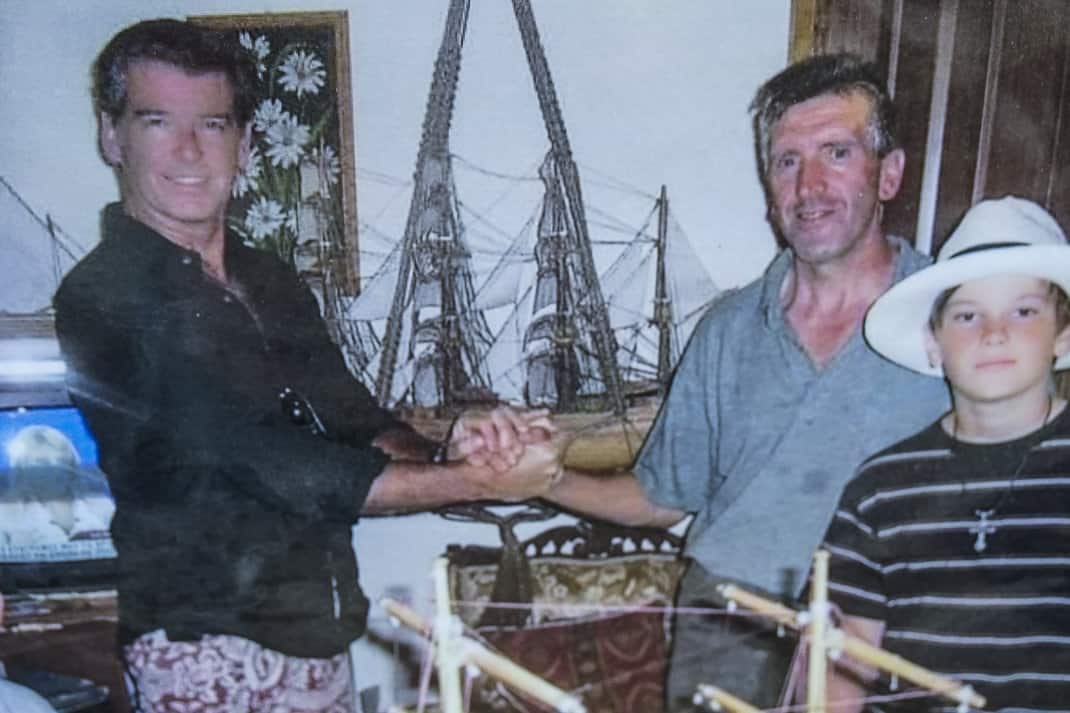
If you’re thinking of going …
Where is it: Ring Road, Skopelos, 30-698-103-9495, 12:30-4:30 p.m.. https://www.bountalas-shipbuilding.gr/en/, Saturday; 10 a.m-2 p.m., 6-8 p.m. Sunday, Wednesday-Friday; 10 a.m.-2 p.m. Monday; 10 a.m.-4 p.m. Tuesday. Entrance free. Closes in mid-October. Reopens in May. Tours in winter can be arranged by appointment.
How to get there: Sky Express has daily 40-minute flights from Athens to Skiathos. I paid €414 for two round-trip tickets in August. Numerous ferry companies make the 50-minute trip from Skiathos to Skopelos. I paid €58 for two round-trip tickets.
Where to stay: Panormous Beach Hotel, 30-2424-022711, https://www.panormosbeach.com/, info@panromosbeach.com. Located across the street and up a short hill from Panormos Beach, it has a great view of the sea with an infinity pool and a poolside bar. Friendly, helpful staff and excellent breakfast. I paid €822.50 for seven nights.
Where to eat: Ta Kymata, Old Port, Skopelos, 30-24240-22381, tavernatakymata@hotmail.com, 9 a.m.-midnight. Nearly 130-year-old family run restaurant on far end of port specializing in seafood. Mains starting at €14
Tavern Vasiliki, Epar. Od., Panormos, Skopelos, 1-10 p.m. All traditional Greek dishes plus some gourmet items at cheap prices.
When to go: July and August are ideal for warm seas. Every day our last week in August was mid-80s with bright sunshine. However, it is crowded and more expensive. Weather turns cooler and wetter in September. Skopelos all but shuts down in winter.
For more information: www.Skopelos.com.

